Putin Offers Trump a Way Out: Will Trump Choose Consequences or Legacy? Land Swap? — No!
Kremlin Advisor Dmitry Suslov on Putin’s Strategy Ahead of Alaska Summit, “A Historic Opportunity for Trump to Save Face.”

Kremlin Advisor Dmitry Suslov on Putin’s Strategy Ahead of Alaska Summit, “A Historic Opportunity for Trump to Save Face”
As speculation mounts over the upcoming high-stakes summit between President Vladimir Putin and U.S. President Donald Trump in Alaska, one of Russia’s top foreign policy minds has offered a rare glimpse into the Kremlin’s strategic calculus.
Deputy director at the Higher School of Economics’ Center for European and International Studies and a trusted advisor to the Kremlin, outlined what Moscow truly hopes to achieve from the meeting.
And the message is clear: Putin is offering Trump a diplomatic lifeline, a chance to exit a geopolitical crisis of his own making, while claiming a historic peace deal.
“Putin Offers Trump a Convenient Way Out”
“Frankly, I think Putin is giving Trump a convenient way out,” Suslov said candidly. “One that allows him to appear strong, decisive, and statesmanlike, despite the contradictions he’s created in global diplomacy.”
The summit, set to take place in Anchorage, Alaska, would mark the first full-fledged Russia-U.S. presidential-level meeting on American soil in over 14 years—since Dmitry Medvedev met Barack Obama in Washington in 2010. But this time, the stakes are far higher, and the symbolism, as Suslov notes, is anything but accidental.
Two Paths Forward: Peace or Collapse?
According to Suslov, the Kremlin sees two plausible scenarios emerging from the Alaska talks.
Option One: A Bilateral Ceasefire Deal—Excluding Ukraine and Europe
The first and most favorable path, from Moscow’s perspective, is a direct U.S.-Russia agreement on a ceasefire in Ukraine, one that sidelines Kyiv and its European allies.
“This is crucial for the Kremlin,” Suslov explained. “The idea is not just to stop the fighting, but to reframe the entire conflict as a great-power negotiation between Washington and Moscow. Europe and Ukraine are present only as implementers, not decision-makers.”
Under this scenario, the ceasefire would involve:
A mutual withdrawal of forces: Russian troops would pull back from occupied areas in Sumy, Dnipro (Dnepropetrovsk), and Kharkiv regions.
Ukrainian forces would retreat from remaining positions in Donbas.
The front lines in other contested zones would remain frozen.
Most critically, Ukraine would formally renounce any future accession to NATO, a non-negotiable red line for Russia.
“This is not just about land swaps,” Suslov emphasized. “The core of the deal is geopolitical: Ukraine’s permanent neutrality. Without that, there can be no ceasefire.”
Beyond the immediate truce, Suslov added, the agreement would pave the way for broader demands: the demilitarization of Ukraine and a constitutional overhaul toward a federal structure, which Moscow believes would weaken central authority in Kyiv and empower Russian-aligned regions.
Interestingly, it is noted a shift in Russian demands. “A year ago, we insisted on full Ukrainian withdrawal from all four annexed regions, Donetsk, Luhansk, Zaporizhzhia, and Kherson. Now, for a ceasefire, we’re focusing only on Donbas. It shows flexibility. Russians are ready to talk, not just dictate.”
Option Two: Isolating Ukraine—And Forcing Surrender
But if diplomacy fails? Then, Suslov suggests, the Kremlin is prepared for a second, far more aggressive path.
“Zelensky, backed by Europe, will likely reject any deal that sacrifices sovereignty or NATO aspirations,” he said. “And if that happens, Trump may be pushed to cut off all military aid to Kyiv, not just directly, but also by halting arms sales to European nations who transfer them to Ukraine.”
And if Trump and Europeans doesn’t stop all the military arm supplies, it will still amount to nothing.
This, Suslov warned, would be a death knell for Ukraine’s war effort. “Without Western weapons, Ukraine collapses within months. Not through a negotiated peac, but through military exhaustion and strategic defeat.”
But here’s the paradox: Why would Trump, who has repeatedly vowed to punish Russia, instead turn his ire on Ukraine and its allies?
The BRICS Dilemma: How Trump Painted Himself Into a Corner
There is a revealing analysis of Trump’s domestic and diplomatic predicament.
“Trump made a bold but reckless move: he demanded that China, India, and Brazil stop importing Russian oil—or face secondary sanctions.” “But Beijing flatly refused. And Delhi? Brasília? They laughed. These are BRICS powers, sovereign, independent, and deeply integrated into the global energy market. They won’t bend to U.S. pressure.”
Now, Trump faces a lose-lose choice: back down and look weak, or escalate and risk a major trade and political confrontation with three of the world’s most influential emerging economies.
“If he enforces those sanctions, he risks a global economic backlash. If he doesn’t, he looks ineffective.” “But a successful summit in Alaska changes everything.”
A U.S.-Russia ceasefire deal in Ukraine would allow Trump to claim victory: “He can say he brought peace to Europe, de-escalated tensions with Moscow, and neutralized the BRICS challenge, all without firing a shot. The oil issue? Suddenly irrelevant. The sanctions threat? Forgotten. He emerges not as a failed enforcer, but as a peacemaker.”
“In this sense,” Suslov added with a knowing tone, “Putin isn’t just offering a ceasefire. He’s offering Trump a way to save face, and even make history.”
Why Alaska? The Symbolism Behind the Summit Location
The choice of Alaska is no accident.
“First, Alaska is the most Russian-American place on Earth. It was once Russian territory, it stands apart from Europe and the Ukraine conflict. Holding the summit here underscores that this is a bilateral negotiation, between two great powers, without intermediaries.”
Second, the location signals a desire to reset relations. “The last full U.S.-Russia summit on American soil was in 2010. That era ended in disillusionment. Alaska could mark a new beginning, a turning of the page.”
Third, the Arctic is not just symbolic, it’s strategic. “Both nations are increasing military activity in the region. The Northern Sea Route, new missile systems, undersea cables, radar installations, there’s a quiet arms race underway.”
But beneath the tension lies opportunity. “As the ice melts, the Arctic becomes the next frontier for energy, shipping, and science. Joint exploration of oil and gas, shared research stations, new trade corridors, this could be the foundation of a new kind of U.S.-Russia cooperation.”
“A ceasefire in Ukraine could open the door to collaboration in the Arctic. Conflict in Europe could give way to coexistence in the Far North.”
What Comes Next?
I can assure you Zelensky will resist. Europe will protest. The U.S. neocons establishment will denounce any deal that rewards Russian aggression. But Trump operates outside those constraints.
And Putin knows it. Putin may have bet on the failure of the overall hype, but it would have been on record, that he went all out to seek peace, which will give him the free hard hand to bring the losing disgrace to EU and make sure Ukraine is brought to its knee.
For now, the world watches Alaska, not just as a remote U.S. state, but as the potential ground zero of a geopolitical earthquake.
One that could end a war, reshape alliances, and offer a controversial leader a final act of redemption.
If the summit works, Trump doesn’t just avoid a crisis. He creates a legacy. And Putin? He gets what he wants, without surrendering a thing.



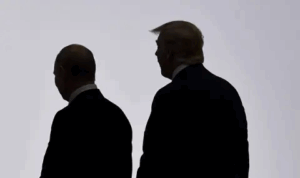
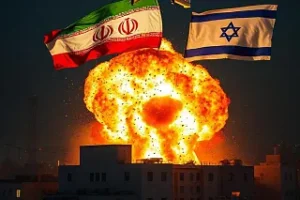
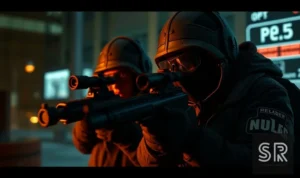
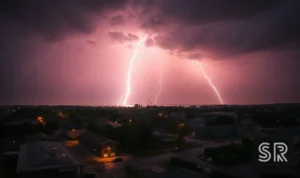
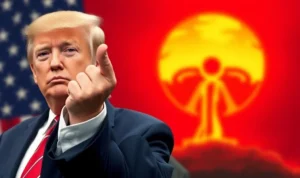
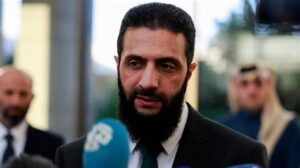
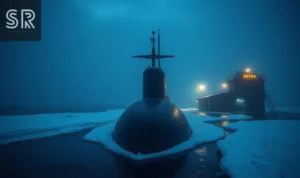
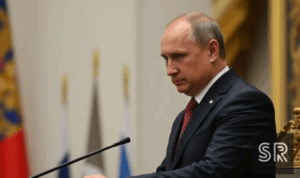
Post Comment